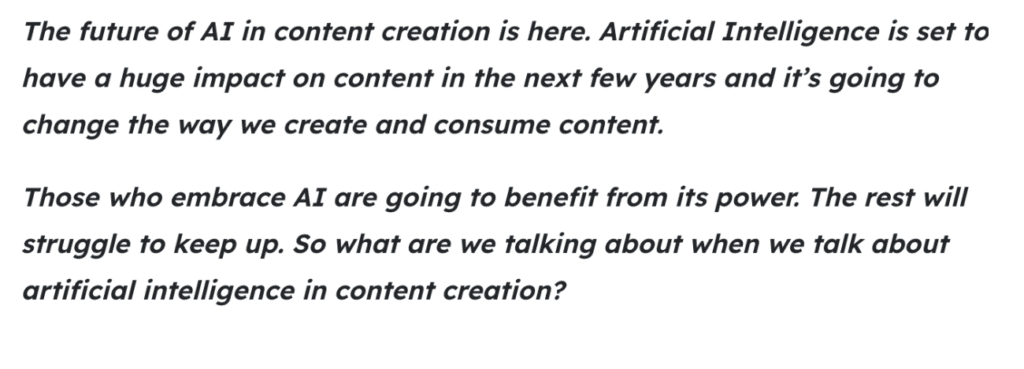Did you know that there are charities and nonprofits out there committing time and resources to fight AI from taking over the earth? Initially, I had a good chuckle about this — it felt like maybe the people involved had watched The Matrix one too many times. Then I learned about the extent to which AI is taking over human jobs in certain industries. Copywriting, my first love, is one of those industries.
Digital content is critical for any company that uses blogging, social media, email marketing, and other content marketing tactics to connect with current and potential customers. Yet there are costs to continually creating this content, most specifically the cost of paying humans to spend time on research, strategy, writing, and editing. So when it comes to evaluating the value of copywriting from a purely dollars and cents perspective, some companies are finding that it makes more sense to use an automated tool to write copy. But how useful are these tools really, and where does this leave actual copywriters who make their bread and butter from writing? Is AI coming to take away their jobs?
Testing a few AI copy tools
Just a few years ago, we wrote about how technology had been unable to provide the personalized tone and value that human copywriting can offer. Others have now taken it a step further: earlier this year, Hubspot and the Hustle co-authored a short research piece in which their team tried out several copywriting automation tools. Although we can’t ignore that the experiment may be slightly flawed — the copywriters who set up and completed the experiment have a reason to be slightly biased, after all — the results were informative.
The writers selected five different AI copywriting tools: Ryter, Jasper, Copy.ai, Copysmith, and Writesonic. They then provided each with the same brief: write a blog post about the role of AI writers in the future of content delivery, in a “casual” tone of voice. Of course, each tool is only as good as the inputs provided (the same applies to the output of any human copywriting assignment, which is why a brief is so critical!), and the quality of the AI programming, so results varied. Here are a few examples of what the tools created:


Credit: HubSpot Blog
AI copywriting quality review
Let’s break down what these tools have created, noting that my opinion adds another slightly biased one to the pile.
The AI copy that the tools provided was created quickly (in some cases, under five seconds), and was grammatically correct with no spelling errors. But reading the copy reminds me of reading the most boring technical manuals ever written. The tone is stilted and stale, and there is zero personality or personalization driving the content. While this copy could be useful for creating optimized content that drives clicks to pages, it won’t be the type of copy that is converting anyone to a brand advocate, or showcasing the best of a brand and what sets it apart.
The verdict on whether AI will take copywriters’ jobs
As consistent content creation becomes more important to keep brands and businesses front and center in the digital sphere, it makes sense that AI copywriting may take on some of the work. There are clear limits though, at least right now. First, AI copywriters are not able to inject emotion, personality, and creativity into copy. A challenge for many businesses in the future may well be choosing when and where to deploy AI copy, when keeping people writing copy — and therefore the secret sauces of brand voice, tone, and personality — will likely improve conversion and brand advocacy.
So is the world of the Matrix closer than we think? It seems so. But will copywriters need to be boarding a proverbial Nebuchadnezzar? I think we’ll live to see another day — but we might want to donate to a nonprofit or two in the meantime!

